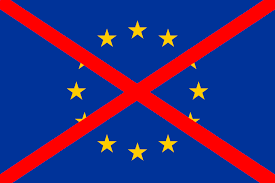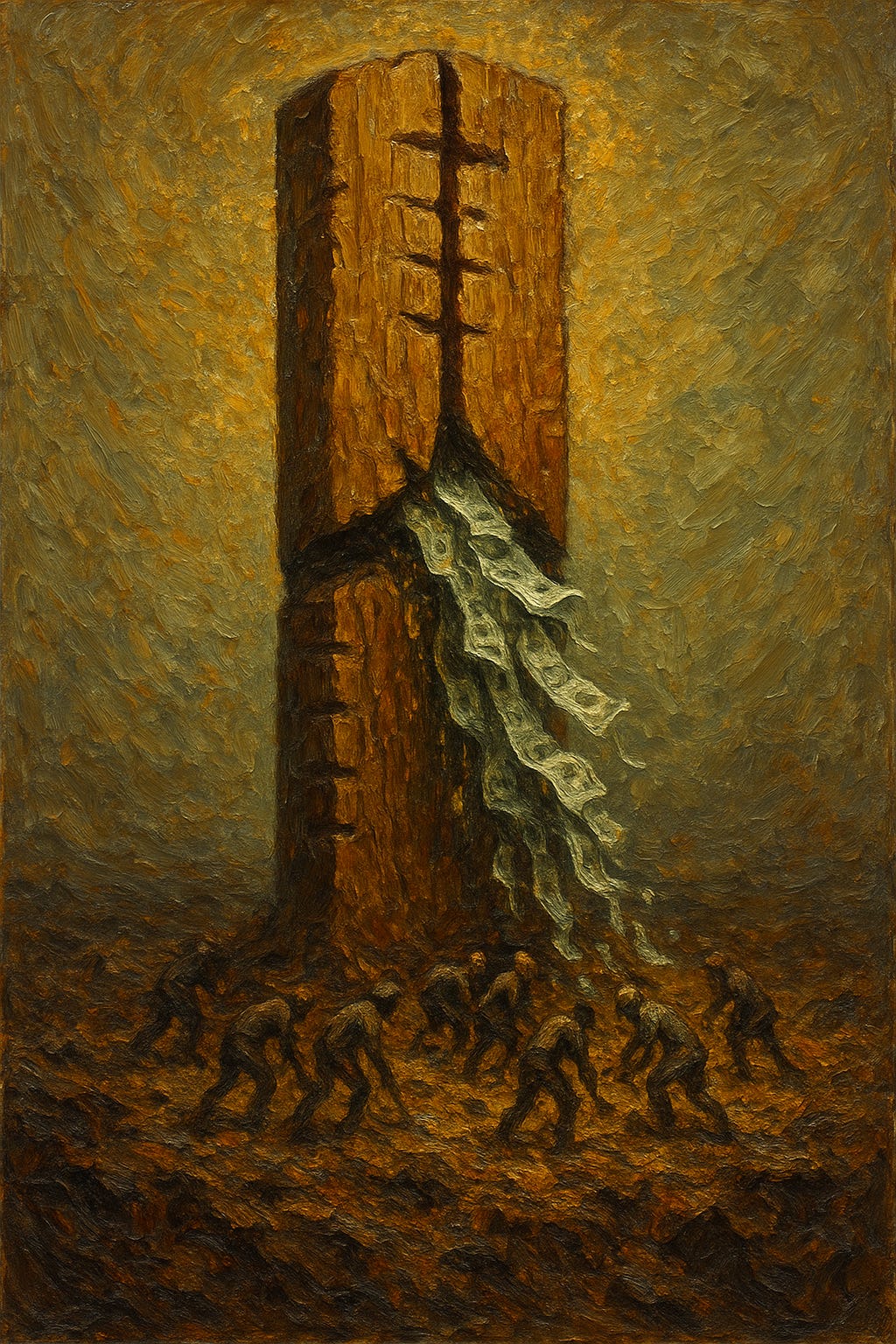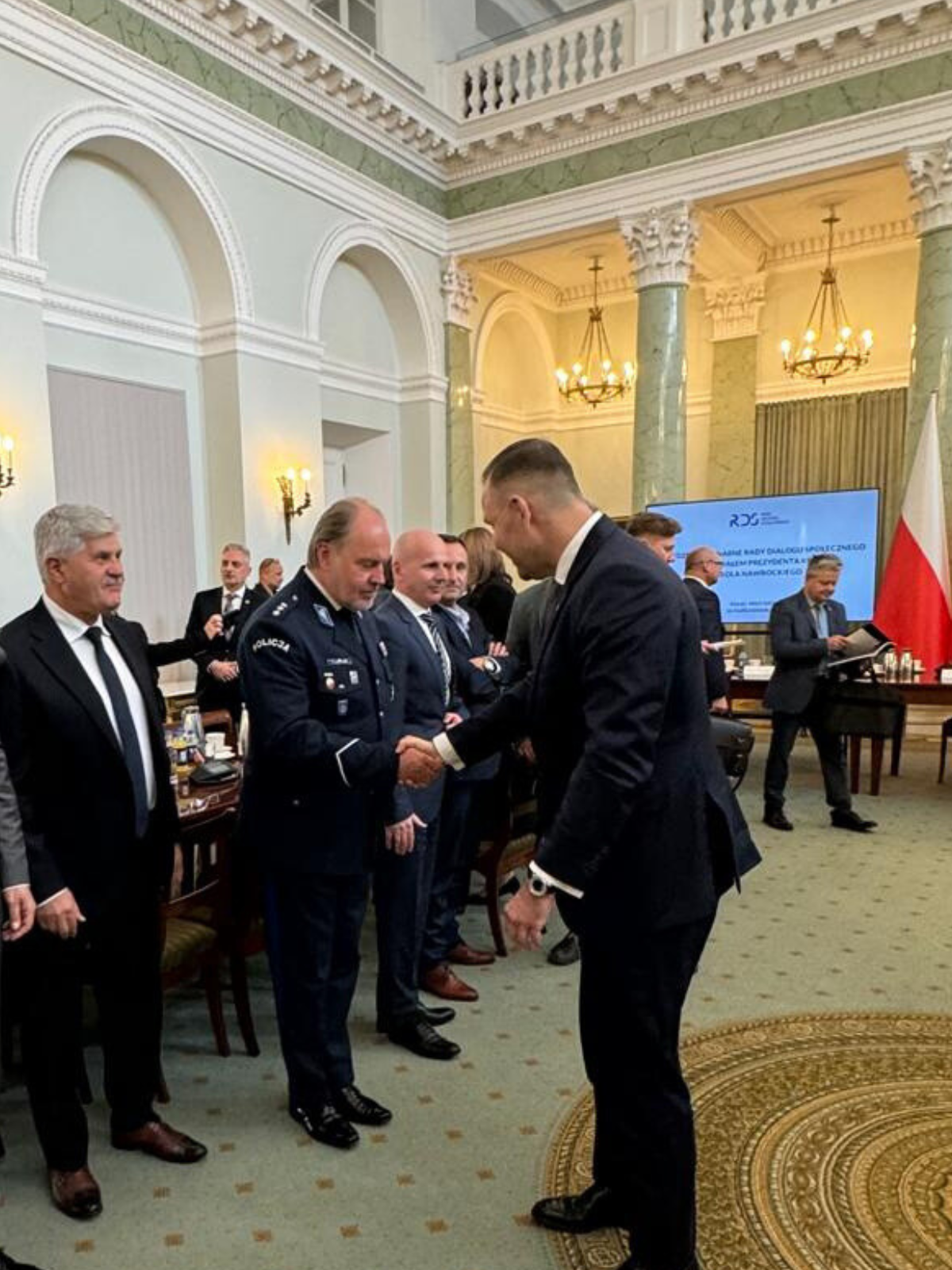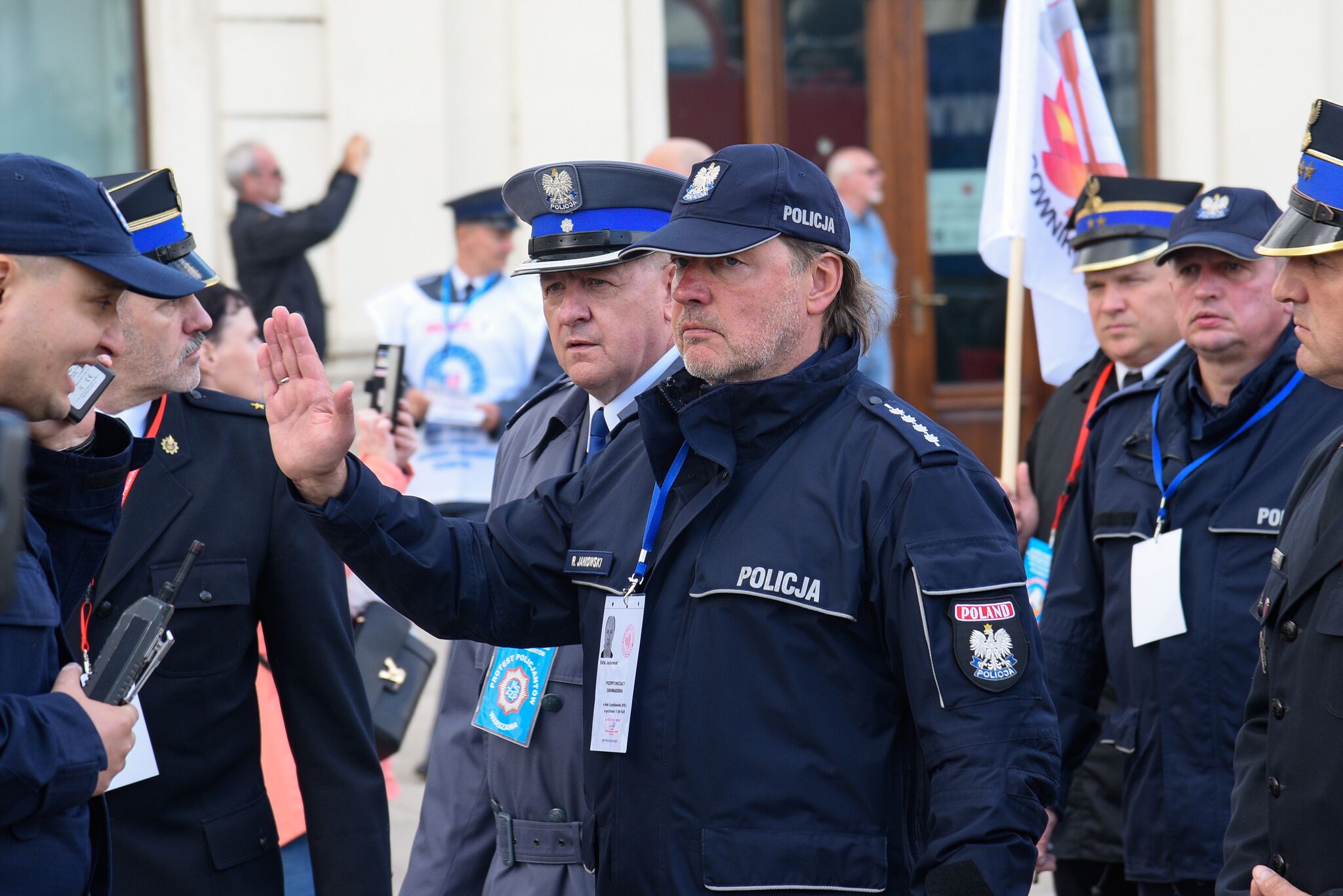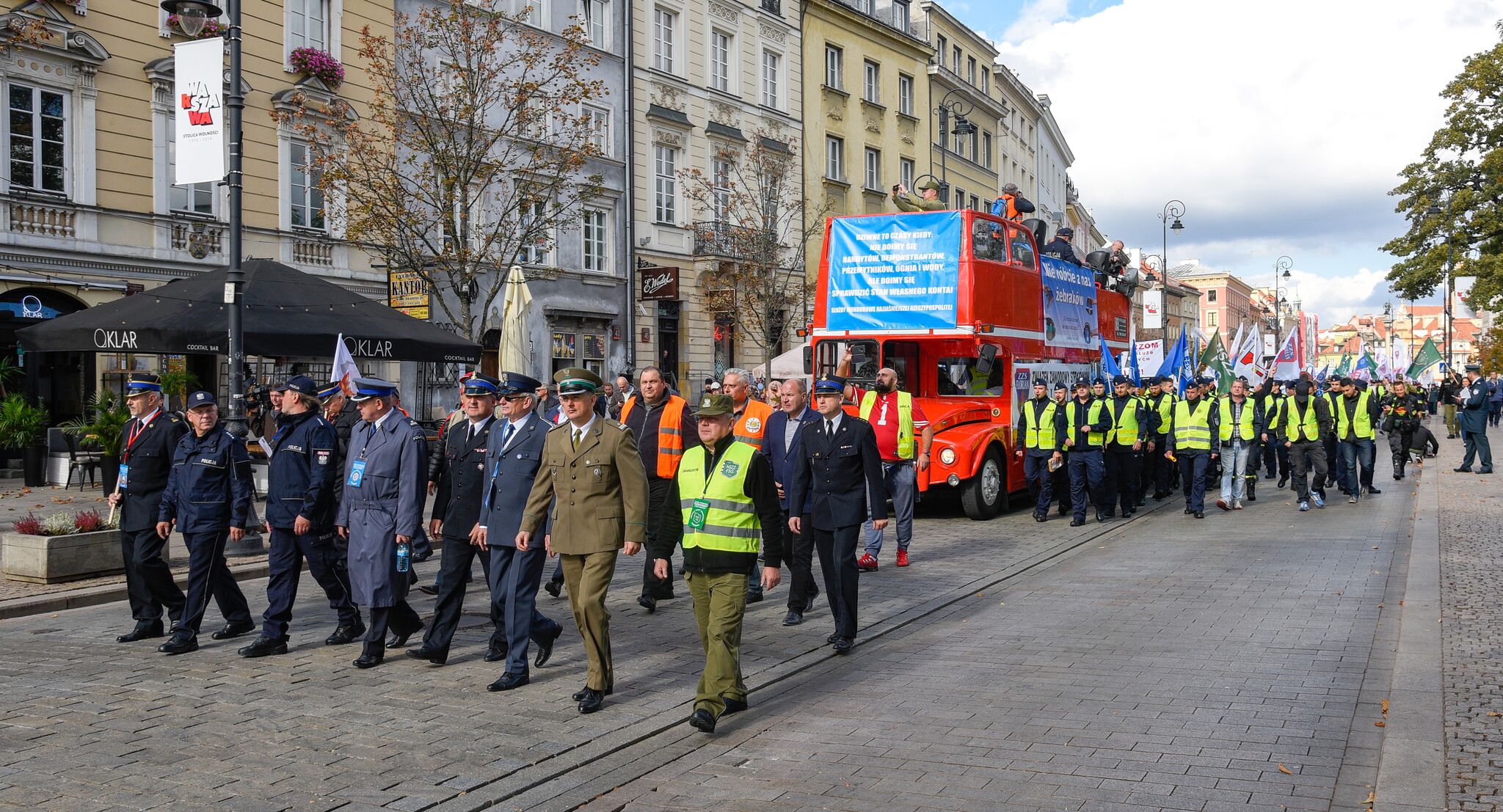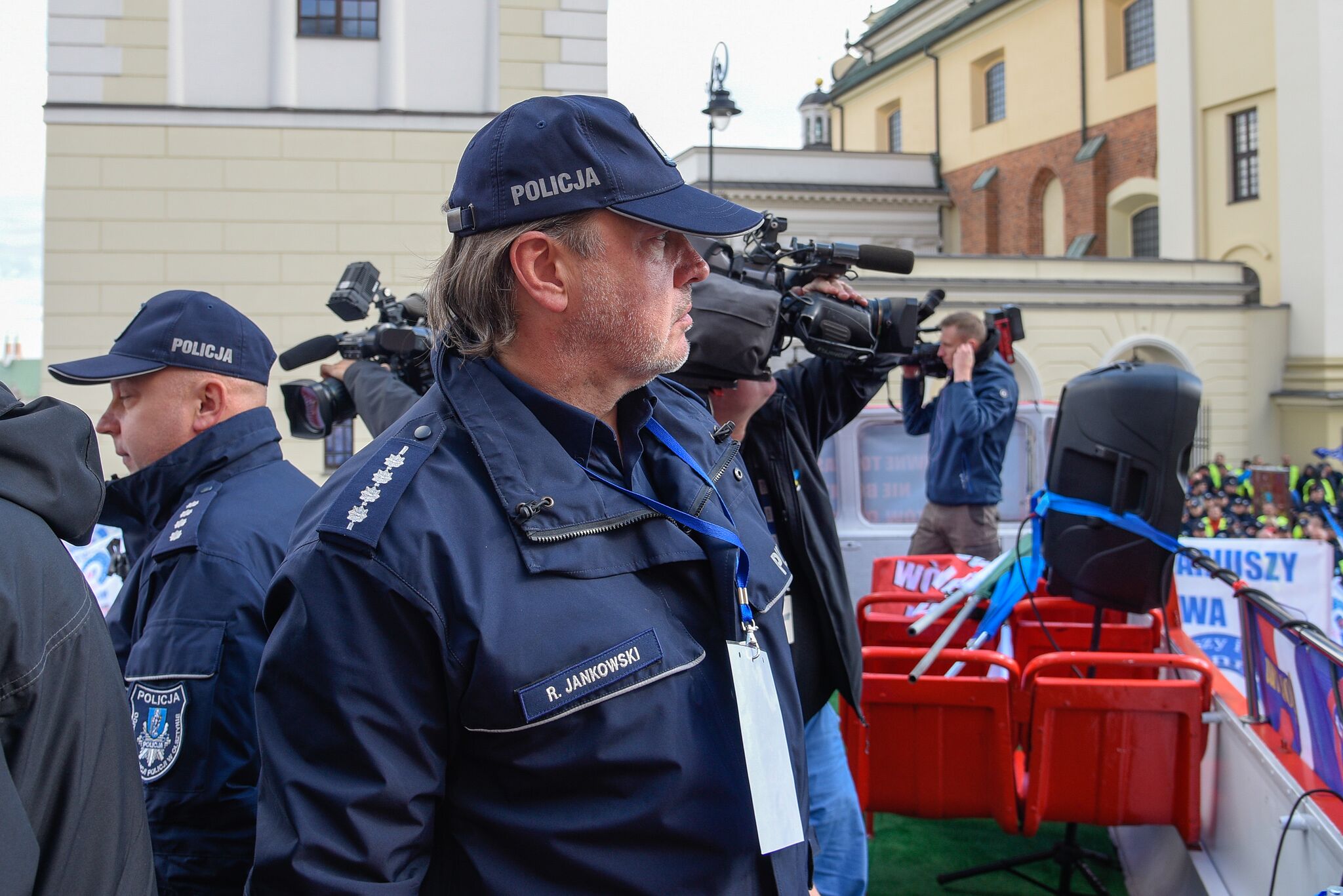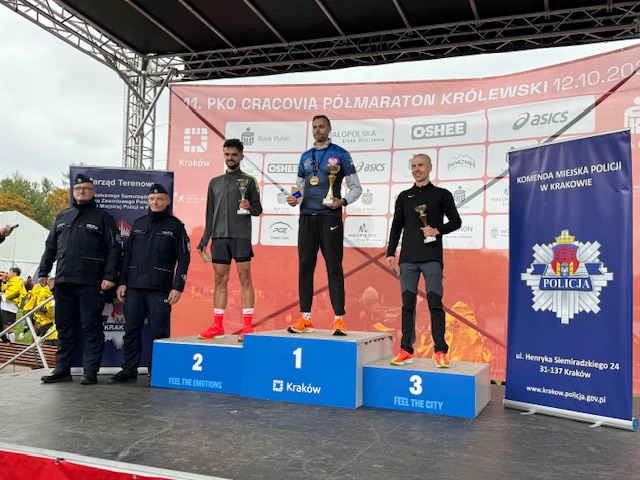27 VOLLISH DIVISION OF THE NATIONAL ARMY – FENOMEN OF THE POLISH UNDERWIDE STATE
The plans for the establishment of the General Volyn territory of the AK assigned secondary tasks. Insurgency opportunities in east Poland were negatively assessed. The fact that the Polish population in these areas was decimated by russian and German occupations and cannot constitute a reservoir of people to the degree that the insurgent base is. In addition to this, there were inactive national problems. In the plans above, the Volynski territory of the AK was expected to shield the uprising from the east. The task of the territory was to undertake diversion and guerrilla action in the area of Volyn, resulting in the cessation of the movement of railway and wheeled transport and thus to restrict the German troops' supply to the area covered by the uprising. The course of events brought another solution.
In 1942 anti-Polish actions of Ukrainian nationalists began. Since January 1943 these actions have intensified, and the extermination of the Polish population has gradually taken over all districts of Volyn. In Volyn there was complete anarchy. In addition to UPA troops carrying out the bloody "ethnic cleansing" of the Polish population, many russian guerrilla troops were present in Volyn, carrying out their tasks, as well as bands consisting of Cossacks escaped from the German service, deserters from German units and from various auxiliary formations. In the AK Chief's study for the period from 8 to 14 May 1943, we find the following entry: "(...) The current state in Volyn resembles the "wild fields". The German administration is powerless and looks at everything passively." Under these conditions, the territory chief was forced to take action to organize the defence of the endangered Polish population, while at the same time in connection with the approaching east front, to lead preparations for the implementation of the plan “Burza”.
At the end of 1943, the east front was rapidly approaching the borders of the II Republic. On 4 January 1944, russian troops crossed the erstwhile Polish-Soviet border in the Rokitna area. Volhyń became a direct base of the German front, more and more troops and logistics units arrived here, the evacuation of the German administration began. In this situation, the commander of the AK Volyń territory decided to start implementing the ,3ura plan". On January 15, 1944, the Regional Inspectors were given an order ordering the mobilisation of the AK's underground troops and directing them to the concentration area in the western part of Volyn. The Polish self-defense area in Zasmyki, located south of Kowla and the self-defense area in Bielin, located north of Włodzimierz Wołyński, was designated as the collection site. In these areas, self-defense and partisan partisan troops “Jastrzębia”, “Sokolo”, “Petersia” and “Korda” have existed since mid-1943. Military troops were formed from mobilized conspiracy soldiers and members of self-defense and were combined with guerrilla troops that had already operated in the field. As a consequence of the mobilization in the areas of concentration of the armed forces of the AK Volyn District, more than 6.5 1000 soldiers were placed under arms, ready to take combat action against Germany, which represented 21% of the overall state of the territory forces.
According to the plan to reconstruct the armed forces in the country by The Ordre de Bataille of peace and dislocation prior to the 1939 mobilization, on 28 January 1944, at the briefing of the officers of the staff in the village of Suszababa, the decision was made to establish the pre-war 27th Infantry Division, which was shortly called the 27th Volhyna Infantry Division of the AK. The division's organization referred to the pre-war traditions of the 27th Infantry Division, the 13th Infantry Division and the Volynian Cavalry Brigade. The erstwhile regiment numbering was preserved.
Two regimental groups were organized out of the above conditions: Kowelski p.k. “Gromada” and Włodzimierzskie p.k. “Osnowa”.
Major Shatowski ‘Kowal’, ‘Zagończyk’ was the leader of the group ‘Gromada’ and at the same time 50 pp. A platoon of gendarmerie and staff protection, sapper platoon, reconnaissance platoon, anti-tank squad and quartermastership were formed at the office of the group. The group included the following battalions: 1/50 pp ‘Sokoła’, 11/50 pp . Jastrzębie’, III/50 pp ‘Trzeska’, 1/43 pp ‘Korda’, 11/43 pp ‘Siwego’ and 1st squadron of 20 regiments of Hinczy nadwiślany. In total, the group had a full of 3074 men, including 56 officers, 314 enlisted officers and 2704 Privates. In addition to linear battalions, troops were organized in the area of the group to defend the civilian population and defend the quartermaster's base with about 250 people.
Captain Kazimierz Rzaniak “Garda” was appointed as the leader of the group “Osnow” and at the same time 23 pp. A platoon of gendarmerie and staff protection, bomb squad, communications platoon, reconnaissance platoon and quartermastership were formed at the office of the group. The group included the following battalions: 1:23 pp "Bogorii" (and from 8.4.1944 "Zejka", 11/23 pp "Lecha", 1/24 pp "Luna", the independent company "Sokola II" (skeletal III/23 pp) and the 19th Ulanian Regiment, Jarosław). The group had a full of 1946 men, including 31 officers, 229 officers and 1686 Privates. In the area of the group were stationed units of civilian protection and protection of the quartermaster's office with about 250 people.
Thus, as a consequence of the mobilisation of the armed forces, The territory was set up under the arms of more than 6.5 1000 people organized in 9 battalions, 2 squadrons and 1 independent company as well as peculiar and logistical units covering communications, bomb squads, reconnaissance, wellness care (two hospitals), quartermaster services and others, ready to take combat action against Germany. About 600 soldiers of the AK remained in self-defense facilities, and about 2500-3500 conspiracy troops for various reasons did not scope the concentration area.
The mobilisation and concentration of the underground units of the AK in Volyn took place under circumstantial conditions. The mobilized troops were exposed not only to attacks by German troops, but besides to UPA troops, whose large groups were located in large complexes of wine and mosur forests and in forests located on the left bank of Stochod.
In order to grow the operational base to activities against Germany, a number of actions were taken against UPA troops. Between January and March 1944, as part of activities to grow the operational base, the “Gromada” and “Osnowa” groups carried out 16 major combat actions against UPA groups. In this way, the threat of the Polish population gathered in the western part of Volyn was removed, conditions were created to form armed troops and make them in a fresh structure
the organisational division and the area of the operational base have been importantly expanded, thus giving the division the freedom of manoeuvre and facilities to fight Germany. During this period, divisional troops simultaneously conducted a number of actions against the German tactical and exploratory.
In the spring of 1944, German troops retreated westwards in attempting to defend selected strategical facilities. The russian troops, after a short break after the Equal-Lut operation, began active action in the Kowel direction. On 18 March 1944, 47 and 70 russian troops blocked Kowel. This crucial communication node has warmed up persistent fighting. As a consequence of these actions, troops of the 27th Volyn National Army Infantry Division were straight in the front zone. On 4 March in the area of Dąbrowa - Zasmyka there was a gathering of the reconnaissance branch of the russian cavalry (Capt. Gusina commander) with divisions of the division. This was the first contact with regular Red Army troops. The divisional command established tactical cooperation with russian units.
The first fight, which was fought in cooperation with troops of the russian Army, was a hit on Turkod on 20 March 1944. This event was noted in a radio dispatch sent by the Home Army commander to the Chief Leader in London: “On 20. III, our guerrilla troops captured Turvod (southwest Kowla) while covering the confederate wing of russian troops, winning Turvod railway station. 3 kb spanc., ckm, handguns and 30,000 ammunition were captured.” Another action, carried out as part of the arrangements with the Soviets, was to take over the village and Turopin railway station and the railway bridge between Turopin and Owadne.
The attack on Turowin and Turopin started an open fight against the German occupier by troops of the 27th WDP AK. The capture of Turwyta and Turopina interrupted Kowla's railway connection with Włodzimierz and secured the confederate wing of russian troops attacking Kowel. For the division, it created an chance for troops to decision westward, and this movement was inevitable due to the approaching front.
The participation of 27 WDP AK in the Kowel operation deserves peculiar attention. In accordance with the conditions of cooperation established with the command of russian troops, the division in late March 1944 regrouped to the western bank of Turia to the area bounded from the east by the row Turia, from the west by Bug, from the north by the Dorohusk-Kowel railway line, and from the south by the Stowlug road – Włodzimierz Wołyński. The area to which division troops regrouped was about 800 sq mi. The commander of the division formed here 2 groups: northern towards Lubomla and confederate towards Włodzimierz Wołyński.
The task of the 27th WDP of the AK was to: establish German forces south-west of Kowl in the Turkod region, Olesk, Lubomi, Zamłynie, Sciług, Włodzimierz Wołyński; keep communication and crossings through Bug; conduct the designation of German troops' movements (especially on the Lublin – Lubomi – Kowel railway line). It was besides planned to engage with the execution of strokes on the Lubomi-Kowel communication line, and in favorable conditions besides in the confederate direction for blocking the Włodzimierz Wołyński-Uściług road.
After regrouping, the division was placed in the position of the westernmost, in the region of direct action of russian troops participating in the Kowel operation. Division troops took a deep wedge into the area of future fighting for an crucial communication node – Kowel. The city was converted into a strengthened area, defended in the first phase by SS troops and retreating German units. On the Chełm – Kowel railway line, strong opposition points were created in the towns of Jawow, Rymacze, Lubomi, Maciejów. In the south there was a reinforced town of Włodzimierz Wołyński and the Włodzimierz road – Hug with opposition points in Piatydni and Ościług, filled by German phase units. From the west, in the areas adjacent to the left bank of the Bug, strictly – from Dorohusk to the Hug, were German forces, insuring Bug.
On 2 April 1944, the division battles began with regular German units from the fighting at Sztum and Zamłyń. The division's action in this operation was a front action, although it was not a tactical union of the regular army. In the first phase of the fighting, her troops successfully conducted defensive-backed actions against more many and better armed regular German units, utilizing a wing and rear maneuver. The final focus of these actions was to effort to take the initiative on 12 April by performing a return which was attached simultaneously in 2 directions: northern and southern. As a consequence of the unfavorable course of fighting both towards Lubomla and Włodzimierz, the division threatened a lap. russian Command did not agree to retreat troops of the 27th WDP AK to the Turia line and take up defence there. The division, left in the mass of mosurian, herblic and abzarite forests without any support from the regular russian army, led dense defensive battles in the lap from 13 to 19 April 1944.
The situation of surrounded troops was difficult. On 18 April 1944, Colonel Jan Wojciech Kiwerski “Oliwa” commander of 27 WDP AK died in the area of the farm Good Country. Soldiers, exhausted by more than 2 weeks of activities under Lubomel and Vladimir Volynsky, were incapable to fight for a long time against opposing troops who had method and numerical advantage. The only way out was to break through beyond the lap ring. After careful analysis of the situation and consideration of the various options for exiting the lap, it was considered that the direction giving the best chance of getting through was the northern direction through Zamlyna, Ya hours, leading to the rear of German troops. The crossing behind Bug could not be taken into account due to the order of the AK office ordering to stay on Volyn.
On 20-22 April 1944, the division broke through from the lap heading north to the forests above the advanced Pripytia. All the rolling stock, dense equipment and infirmary with injured people were left in the lap area. It was a hard but essential decision. The division suffered large losses in the combats carried out as part of the Smith operation: 349 soldiers were killed, 160 were wounded, 170 were taken prisoner, about 1600 were dispersed.6 Despite these losses, the division was not broken. After leaving the lap, her basic core counted about 3,600 men under arms. About 500 soldiers who were incapable to break through the lap took the fight and joined the division already in Lublin.
After the defensive conflict under Sokoł and Holadyn, the division began to march eastward on 25 and 26 April 1944, and reached the Szack forest complex on 28 April. Here it was decided to stay longer to give remainder to exhausted troops.
The fates of the 27th WDP AK, after it penetrated from the lap, were at the centre of interest of the Chief General of the AK General Bora-Komorowski. The division task has not been changed. In an order to the Commandant of the AK territory of Lublin, it is stated that after breaking through from the lap, “the task of these troops will proceed to carry out B [“Burza”] shares east of Bug, as long as possible.” At the same time, the Chief Commandant of the Home Army provided for the subordination of the branches of the 27th WDP AK under the orders of the Head of the Lublin AK District, if these branches did not have the anticipation to stay in Volyn, they crossed Bug and entered the District.
Exit from the lap of the troops of the 27th WDP AK and their passage into the sack forests was no secret to the Germans. The 8th Division was located in the immediate back of the front between the first German line of defence moving from Wyżwa Nowa, along the row to Ratna and further along Pripyta, and the second line moving from Szacka through the towns: Piszcza, Oltusz to Małotyta. The presence of a large guerrilla unit in this area, with almost 4000 people, was not convenient for Germans. From the first days of May, reconnaissance aviation was active, which patrolled the sage forests. The revived activity of German and Hungarian patrols was besides observed, which, coming out of Szack, Zabłocie and Huta Ratneńska, penetrated the area in the day, approaching the Szack forests. Polish patrols sent for food had frequent skirmishes with enemy patrols. All pointed out that Germany could shortly take a wider action against divisional troops in the Shatsk forests.
Since mid-May, the German ringing around the sack forests, in which the 27th WDP AK and the russian partisan troops were stationed, has grown stronger. 9 German aviation continued to conduct reconnaissance flights over the forest complex, shelling from the on-board weapons and bombarding spotted areas of troop deployment. At dawn on 21 May, supported by tanks and artillery fire, the German attack on the sack forests simultaneously began from respective directions: Miernik, Szacka, Kropiwnik, Zabłocie and Ratneńska Huta. As a consequence of the operation, which utilized crucial infantry, artillery, tanks and aviation forces, the Germans pushed troops of the 27th WDP AK and troops of the russian guerrilla to the northern part of the forest into an area of about 4 sq km. On the evening of May 21, at a briefing with the commander of the 27th WDP AK, it was assessed that further combat by specified a large unit on the direct back of the German front, in the absence of supplies, was impossible. Since there was no licence to leave Volyn, it was decided to go behind the front to the russian side. It was decided to break from the lap north-east to the Divina area, from where the Prypeci were to be forced (along which the German-Soviet front line ran), and then a jump to the Police area located southeast of the Koširski Stone. The division was to penetrate in 3 columns and in 3 directions.
During the night from 21 to 22 May 1944, troops of the 27th WDP AK went beyond the ringing of the lap, defeating the vast swamps not filled by the enemy. Apparently, the Germans found this area to be impenetrable during the spring period. In the meantime, the division commander received an order from the Home Army Chief to go after Bug. The staff column headed west and crossed Bug in the Durycze area on 29 May 1944. The “Kwala” and “Gardy” groups failed to turn back. On 27 May 1944, an effort to break through the front line to the Pripeci took place by the “Gardy” group, with large losses of about 40% of the state. About 120 people died in Pripeci and 114 soldiers were wounded.10 After this tragedy, the Blacksmith group turned back and headed west towards the Bug. In the Medna area, she met with the second part of the staff column. On the night of 9th to 10th June 1944, division troops crossed Bug simultaneously at 4 crossing points and headed south-west on a strong march reached the Parczewski Forest area on 17-20th June 1944. The stay in the area was primarily utilized for remainder and order of the branches and training.
15 July 1944. Germany launched a large pacification action by Mr Wirbelsturm (cyclon) against troops grouped in the Parczewski forest area. On the night of 17 to 18 July 1944, the division broke through the tightening ringing of the lap and entered the Czechia forest complex. Here in the last decade of July 1944, she took part in the “Bury” in Lublin for the second time. On 21-22 July 1944, she occupied Firlej, Kamionka, Lubartów, Kock, Michów, mastering an area of about 180 sq km. In this way the direction of German troops moving from Lublin to Łuków was blocked. The area occupied by the 27th WDP of the AK included russian units of the 29th Guarded Infantry Corps comprising the 8th Guarded Army of the l Belarusian Front. At a gathering with the russian army commander, further actions of the division were agreed, which was to operate in the direction of Warsaw together with the russian corps. alternatively of continuing the joint fight against the occupier, the 27th WDP AK was insidiously disarmed under Skrobów on 25 July 1944. On July 30, the same destiny was met by the battalion of the aggregate division in Szczebrzeszyn.
The activity of the Polish underground independency in Volyn and the creation of the 27th Volyn Infantry Division of the AK took place under peculiar conditions. The motives for organising the division and the function it fulfilled in Volyn must be considered against the background of both the political conditions (the position of the Polish government in exile on the east border, Polish-Soviet relations) and the general situation in this region under German occupation, and especially the tragedy of the Polish people, threatened by the demolition of Ukrainian nationalists. The events in Volyn took place under conditions of national antagonism fueled by the occupiers, political conflict for these lands, disorganization of economical and social life. They developed rapidly and unexpectedly. Organizational work related to the creation of the division was undertaken at a time erstwhile the massacre of the Polish population by the CNS-UPA took on a massive character, and the disorganization of the business administration reached its peak.
27th WDP AK first launched implementation of the “Burza” plan. It had a different dimension and course than the subsequent activities of the AK branches in another areas of Poland, mainly due to conditions, momentum and duration. The combat actions of 27 WDPAK under the ‘Burza’ plan, in their first phase, included the area of 4 districts extending from the row, Styr to row Bug and then moved to confederate Polesia and ended up in Lublin.
Already in the first phase of action, in early March 1944, divisional command established communication with the command of the regular russian army. As a consequence of the negotiation with the russian Army's command, the principles of tactical cooperation were established in the fight against the Germans. russian Command has agreed to respect the organisational separation of the AK branches, recognising that it is simply a Polish division which has its authorities in Warsaw and London.
The commander of the 27th WDP AK informed the KG of talks with russian Army representatives, agreed arrangements and conditions and requested acceptance of the agreement. The dispatch sparked a large stir in the Home Army Headquarters, in the office of the Chief Commander, and even in the Government of Poland. During this period, the Polish Government in London had no relations with the government of the russian Union. Attempts to mediate the United Kingdom and the United States on establishing diplomatic relations have failed and have only led to fruitless talks. Here, in Volyn, there was an agreement in the field of a common fight which gave the chance to revive political relations between the Polish Government and the russian Union. Of course, it was inactive far from solving the fundamental problems in relations between Poland and the russian Union, but there was undoubtedly a chance that the russian National Army would recognise itself as an ally in the fight against Germany.
The participation of the 27th WDP AK in the action “Burza” in Volyn and Polesiu besides had a political dimension. The activities of the division within the framework of the Kowel operation, and later besides in Polesia, were a political-military demonstration which was to paper the Polishness of Volyn and the participation of the Polish soldier in his liberation. The presence of the division in Volyn and its fight against the occupier proved that the Polish state exists, operates and fights, has legal state authorities representing the continuity of the independent state entity of Poland and the armed force fighting in the country. It was so a demonstration before the planet of the sovereign rights of Poland to the land of Volyn. Unfortunately, efforts and casualties of a soldier of the 27th WDP AK had no influence on political solutions. Decisions on this issue were taken at a conference of 3 powers: the United Kingdom, the United States and the russian Union in Tehran, without the participation of representatives of the Polish Republic.
The Soviets' attitude to the formation of the Home Army from the beginning was hostile, or alternatively hostile. It was regulated by the Stawka Directive of the russian Chief Command of 14 July 1944 on the disarmament of Polish armed troops subject to emigration 12 In accordance with this directive, all AK troops encountered were disarmed, arresting and exporting personnel and even soldiers to camps inside the russian Union. This besides happened to 27 WDP AK. It did not aid to invoke the common struggles fought in Volyn and Polesia. On 25 July 1944, 27 WDP AK ceased to be as a military unit.
The 27th WDP AK was the largest guerrilla unit, which operated continuously from January 1944 to July 1944 as a compact and organized tactical union. She started the action “Burza” and has implemented its assumptions in Volyn and Lublin for the longest time. It was a circumstantial phenomenon in the Polish guerrilla movement. In conducting six and a half months of persistent fighting, she over 600 km. On her conflict trail, in sixty major battles, she suffered crucial losses of: 626 dead, about 400 wounded, 195 taken prisoner, and 1320 missing. This represents 42 % of the failure compared to the first state of the division. Division troops have lost the enemy, which are estimated at 700-750 killed, 900-1000 wounded and 348 taken prisoner.
Combat actions of 27 WDP AK did not receive due designation in the post-war 50-year-old. Division battles have not been spoken or presented in false light. Therefore, we are returning to these events today, so that this modest part of the past of fighting for Poland's independency will not be forgotten.
“Lwow Meetings” Prof. Władysław Pillar, co-operation of Bożena Rafalska editor-in-chief.
http://tmptik.org.pl/27-wolynska-division-personnel-ak/
Władysław Tadeusz Pillar ps. Hora, Wondra (born 18 February 1926 in Ivanicze Nowe, changed 13 August 2019 in Warsaw – Colonel of the Polish Army at rest, prof. of average military sciences (1983) (informatics, military command, computer strategy modeling), military historian, soldier of the 27th Volynian National Army Infantry Division, academic of the Academy of General Staff, lecturer of the Higher School of Officers of the Communications Army. Deputy president of the Volyn territory of the planet Union of National Army Soldiers.
